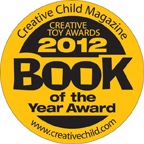I am a professional musician—a pianist and composer. I’ve worked with actors and dancers since high school, and am comfortable with all of the performing arts. But I am also an education consultant, with a busy travel schedule crisscrossing the country, leading teacher-training seminars and professional-development institutes. This is the story of a professional journey I never imagined taking—the path that connected those two seemingly distant dots.
Starting out as an artist in the schools 20 years ago, I was hired to perform in the auditorium, engage small groups of students in hands-on arts activities, and share with children my life and perspective as an artist. At that time, schools felt that it was valuable for students to have an intimate, personal experience with a professional artist.
About 15 years ago, a new kind of school-artist relationship started to evolve. Schools began asking guest artists to connect their work to the content that students studied in the classroom. This was a monumental shift from my previous experience, and was not achieved overnight.
To do this, I needed training to be able to interpret national and state content standards, and to identify concepts and experiences that would be faithful to the arts and meaningful to classroom learning. This training was most frequently offered by performing-arts institutions, working overtime to keep artists in the schools.
Through this work, I came to be known as a “teaching artist.” I was called upon to collaborate actively with classroom teachers. If my assigned teacher was teaching geometry, I would lead a creative-movement experience in which students used their bodies to learn.They connected line and shape in geometry to body line and body shape in dance. If children in mathematics classes were learning about repeating patterns, skip counting, or multiplication, I would pass out drums and teach them to create rhythmic patterns that represented those mathematical ideas. Similarly, if students were studying point of view in language arts, I led a drama experience in which they could go into character and express and analyze their feelings.
Teachers were immediately impressed by students’ motivation and learning during these teaching-artist sessions. Students who typically showed no interest in daily classroom activities joyfully volunteered to be part of the class. Troubled students who had failed year after year and been all but written off shocked us with the imaginativeness and sophistication of their thinking. Preschoolers who had never uttered a single word in the classroom began speaking during my sessions. Students were able to absorb ideas on a deep, conceptual level and with what seemed to be less effort. Retention was off the charts, with students able to remember information for weeks and months between visits. This was not just my experience—every teaching artist I knew was having the same level of success in the classroom.
Once teachers and administrators saw the power of the arts for revolutionizing the classroom environment, they wanted to capture that magic and move toward a new phase in teacher-artist relationships. Over the course of the past decade, I have been called upon to share my craft with classroom teachers—to train them to teach like artists.
To train teachers, I had to know what they knew. I needed to attend the training sessions they attended and learn about current educational theory and instructional best practices. In the course of this, I began to notice that while many educational theories were quite powerful, they often lacked practical models for classroom application. I found few teachers who had ever seen educational theory at work in a classroom.
Over time, as I built my knowledge, I also began to realize that many of the ideals valued highly by education theory were embodied naturally, and practically, in the arts. I’ll offer two examples:
Most teachers understand Howard Gardner’s theory of multiple intelligences and value its ideal of reaching diverse learners through a wide range of instructional strategies. They may struggle, though, to find ways to apply the theory in a real classroom. For example, when asked how to teach the “kinesthetic” learner, one of those identified by Gardner, many teachers may suggest periodically inviting students to get out of their seats and stretch. This is only a first step. Dance is an art form that immediately lends itself to science. When students use their bodies to connect elements of dance (such as weight, time, force, energy, and transformation) to concepts in science, we are truly reaching the kinesthetic learner. Imagine dancing the water cycle—moving through the stages of liquid flow, evaporation, condensation, and rainfall—as a way of learning in the classroom.
When asked how to teach the auditory/musical learner, teachers may suggest inviting them to read out loud. This falls short, too. Music is intimately related to language. When students explore their voices and use musical phrasing, articulation, inflection, and timing to bring expression to their reading, the sound environment in the classroom shifts from mundane to marvelous. So, the arts can offer dramatic yet practical examples of Howard Gardner’s theory in action.
Another educational theory, that of social constructivism, holds that the optimal learning environment is one in which an active and dynamic interaction between all participants leads students to create their own meanings and personal truths. How can this theory be brought to life in classrooms where teachers are afraid to free students from their desks to engage in active learning?
We can look to the arts to see this theory in action. Artists are skilled at creating environments in which learners must cooperate, collaborate, compromise, and reach consensus when working together in groups. Think of how actors and directors work in the theater. Groups of actors often meet independently to discuss and rehearse scenes. After practice, these scenes are shown to the director, who guides the actors through a process of questioning, observation, reflection, and revision. In school, when students use this process to develop scenes from, say, the Civil War, the theory of social constructivism has moved into the realm of classroom practice.
Through my decades of bringing the arts to schools, I have been in thousands of classrooms nationwide. I have seen firsthand that teachers do want the best for their students. They do believe in best-practice theory, but too often have not been shown what it looks like. In preservice training—before teachers enter the classroom—future educators must be shown theory and practice working hand in hand. We need to stop talking to educators about high-quality teaching, and get in the classroom and show them how to do it.The arts are not about talking—they are about doing. And the arts have the power to show excellent teaching in action.
Marcia Daft is an arts and education consultant in Chevy Chase, Md., whose work has been presented by the John F. Kennedy Center for the Performing Arts, the Wolf Trap Institute for Early Learning Through the Arts, the Smithsonian Institution, and numerous arts and education organizations throughout the United States.


